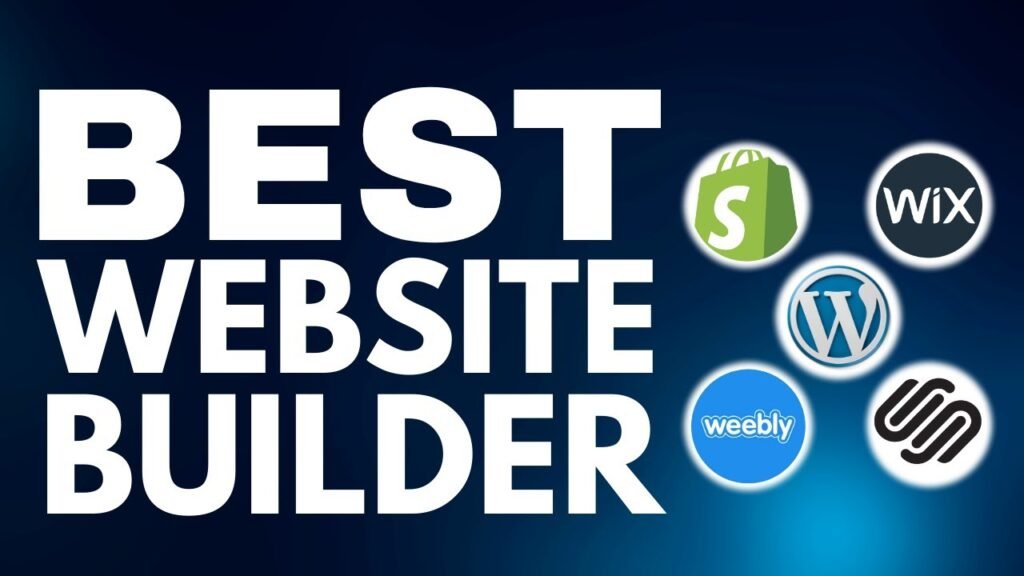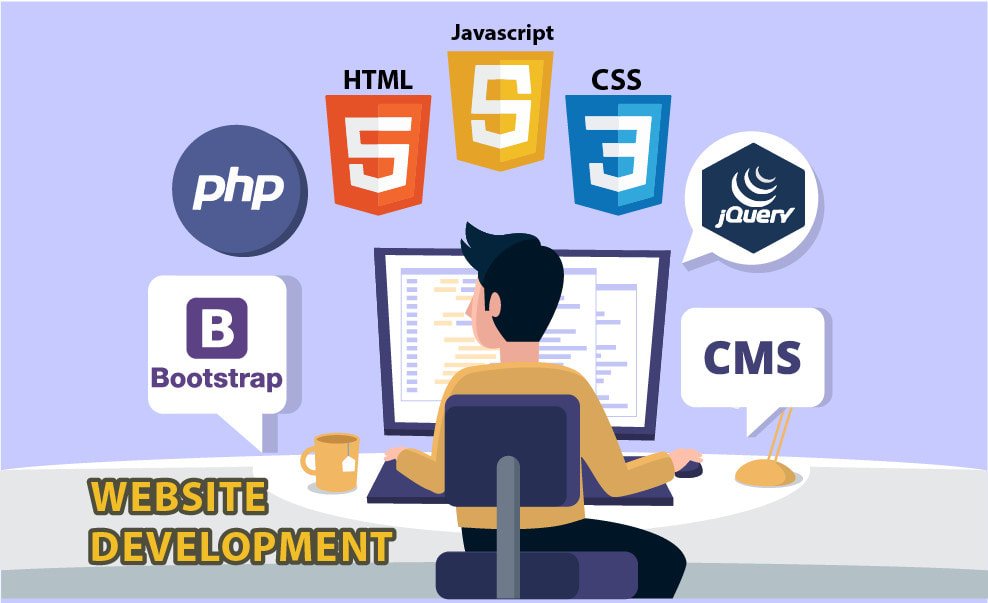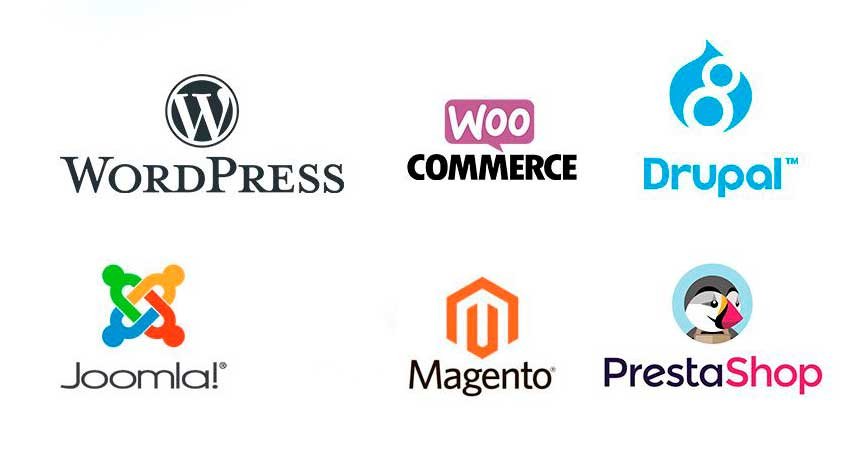
Access a wide range of tools and platforms to build a Website, as well as the best free website builder. There are numerous tools and platforms available to build a website, each of which offers different features and needs as well as different user requirements and skills. Choosing the right one depends on factors such as your technical experience, design preferences, scalability requirements, and budget.
Now that you have taken the crucial first and most difficult step in launching your business, recognize the need to create an effective website and know the key elements and considerations before building it, it is time to explore the top options to achieve this, initially a great idea is to start strong by taking advantage of the best free website builder.
Starting at age 44, your energy, metabolism, and overall well-being may be silently declining. Don’t wait for symptoms.
What is the Best Free Website Builder to Create a Website?
When you decide to create a website, there are several paths you can take.
1. Hire an Expert Person or Company
You could hire an expert (or a team of experts) to create a website for you. But who would be in charge of maintenance? Who would make the changes, who would add content?
2. Use the Best Free Website Builder according to your Requirements and Preferences
Perhaps the best free website builder is not Wix, but it is among them along with Weebly, and Squarespace which you could use in a similar way depending on your Specifications and Wishes. Unquestionably and undoubtedly this way of creating your website has many advantages, two of them being the main ones: they are easy and they are free (although, of course, they also have payment plans).
But if you do, you lose the possibility of customizing every detail to get what you really want since you have to adapt to their already predefined designs. And since these companies host everything you create, you also give up ultimate control over your website. However, they are an excellent option and even more so when you are a beginner and/or do not have the time, resources or availability to choose another option like the first one (Hire an Expert Person or Company) or the other two that we will discuss after this one (Use of HTML, CSS and JavaScript or use WordPress).
All three platforms, Wix, Weebly, and Squarespace, share some basic features, such as the ability to create websites without coding knowledge, free plans, as well as offering web hosting and custom domains. However, they also have significant differences in terms of functionality, design, ease of use, and pricing. Here are some key similarities and differences between them:
Similarities
Visual editing: All three platforms offer intuitive visual editors that allow users to drag and drop elements to design their websites.
Templates and customization: Wix, Weebly, and Squarespace offer a variety of pre-designed templates that users can customize to their needs and preferences.
E-commerce tools: All four platforms offer tools to create online stores, manage inventory, process payments, and track sales.
SEO: All provide basic search engine optimization (SEO) tools to help users improve the visibility of their websites in search results.
Differences
Ease of use: Wix is known for its beginner-friendly approach and wide range of customization options. Weebly is also easy to use, but may have fewer advanced design options compared to Wix. Squarespace tends to be more robust in terms of design, but can have a slightly steeper learning curve.
Design and Aesthetics: Squarespace is known for its sleek, modern designs, with a focus on visually appealing aesthetics. Wix offers a wide variety of design styles, while Weebly can be more limited in terms of design options.
Pricing and plans: Each platform has different pricing structures and plans, with different levels of functionality and pricing. Wix and Weebly typically offer Free Plans with upgrade options, while Squarespace tends to be a little more expensive but may offer additional premium features.
Flexibility and scalability: Squarespace tends to be best suited for users looking for a highly customized design and premium aesthetic. Wix and Weebly are more versatile in terms of adapting to a variety of needs, from personal blogs to online stores.
The choice between these platforms depends on the specific needs and individual preferences of the user.
3. Use of HTML, CSS and JavaScript
A third way to create a website would be to learn to program with HTML, CSS and JavaScript, programs that are the basis of web development in general and that allow you to create websites tailored to your needs, only that requires a lot of effort and time (months or years to master them) unless you already have that preparation in solid form.

HTML (HyperText Markup Language)
HTML is the standard language used to create and design web pages. Defines the structure and content of a web page using tags.
It is used to create the basic structure of a web page, such as headings, paragraphs, lists, links, images, forms, among others.
Relatively easy to learn, given its simple and direct syntax. The basics can be mastered in a short time, but fully understanding and mastering more advanced techniques may take longer.
CSS (Cascading Style Sheets)
CSS is a styling language used to control the layout and design of a web page. Allows you to define the visual appearance and layout of HTML elements.
Used to apply styles such as colors, fonts, margins, spacing, alignment, among others, to HTML elements on a web page.
May be more challenging than HTML due to its more abstract and conceptual nature. It requires understanding concepts such as selectors, properties, and values, as well as practice mastering advanced design techniques.
JavaScript
JavaScript is a high-level programming language used to add interactivity and dynamism to web pages. It allows you to manipulate content, respond to events and create visual effects in real time.
It is used to create interactive functions such as dynamic forms, animations, scrolling effects, data validation, among others, on a web page.
Likely more challenging than HTML and CSS, given its programming nature. It requires understanding programming concepts such as variables, functions, conditionals, loops, among others. The learning curve can be steep for those new to programming, but with dedication and practice, significant results can be achieved.
In short, HTML focuses on the structure of content, CSS on design and visual presentation, and JavaScript on the interactivity and dynamic functionality of a web page.
4. WordPress
A fourth option for creating a impressive website is to take advantage of the power of a CMS (content management system) such as Drupal, Joomla or the acclaimed WordPress. WordPress excels at adapting to your needs, whether you want simplicity or complexity.
Start with free themes that showcase beautiful typography and layouts. Enjoy a content publishing system that makes creating new pages as easy as typing in a word processor. When you need advanced features, simply add plugins.
Best of all, WordPress is FREE, OPEN SOURCE, and most importantly, YOU HAVE FULL CONTROL. This level of control is impossible with hired experts or free plans from developers like Wix, Weebly, or Squarespace.
WordPress is a versatile, open-source content management system (CMS) used to build and manage websites. Initially launched in 2003 by Matt Mullenweg and Mike Little as a blogging platform, WordPress has evolved into a comprehensive CMS supporting a wide range of websites, from simple blogs to complex e-commerce sites and large enterprise websites.
Core Features of WordPress
- Open Source: WordPress is free to use, modify, and distribute, supported by a vast community of developers.
- User-Friendly Interface: Intuitive dashboard for easy content creation and site management without needing advanced technical skills.
- Extensive Theme Library: Thousands of free and premium themes available for customizing the appearance of your site.
- Plugin Ecosystem: Over 58,000 plugins that extend functionality, including SEO tools, contact forms, e-commerce capabilities, and more.
- Customization and Flexibility: Allows extensive customization through themes, plugins, and custom coding, making it suitable for various types of websites.
- SEO-Friendly: Built-in SEO features and plugins like Yoast SEO enhance website visibility on search engines.
- Responsive Design: Most themes are mobile-friendly, ensuring optimal display across devices.
- Robust Community Support: Large user base with numerous forums, tutorials, and resources available for assistance.
- Security: Regular updates and security plugins help protect against vulnerabilities and threats.
- Multilingual Support: Supports multiple languages, making it accessible to a global audience.
Why WordPress is the Best Free Website Builder
WordPress stands out as the best free website builder due to a series of benefits such as those shown below:
Cost-Effective:
- Free Core Software: WordPress itself is free to download and use.
- Free Themes and Plugins: A wide range of free themes and plugins provide extensive functionality without additional costs.
Ease of Use:
- User-Friendly: Designed to be accessible even for beginners, with a simple interface for managing content.
- Quick Installation: Many hosting providers offer one-click WordPress installation.
Versatility:
- Wide Range of Websites: Supports various website types including blogs, business sites, online stores, portfolios, forums, and more.
- Scalable: Suitable for small sites and large enterprise-level sites alike.
Customization:
- Themes and Plugins: Thousands of options allow you to customize the look and functionality of your site.
- Custom Code: For advanced users, WordPress allows further customization through HTML, CSS, and PHP.
Community and Support:
- Large User Base: An extensive community provides a wealth of resources including forums, tutorials, and documentation.
- Regular Updates: Ongoing updates and improvements driven by the open-source community ensure WordPress stays current and secure.
SEO Capabilities:
- SEO Plugins: Tools like Yoast SEO and All in One SEO Pack help optimize your site for search engines.
- SEO-Friendly Structure: Clean code and customizable permalinks contribute to better search engine rankings.
Integration:
- Third-Party Services: Easily integrates with various third-party services such as email marketing tools, payment gateways, and social media platforms.
- API and Webhooks: Supports REST API for advanced integrations and custom applications.
Security:
- Security Plugins: Numerous plugins like Wordfence and Sucuri enhance site security.
- Regular Updates: Frequent updates address security vulnerabilities and improve performance.
Performance:
- Caching Plugins: Tools like W3 Total Cache and WP Super Cache improve site speed and performance.
- Optimized Hosting: Many hosting providers offer specialized WordPress hosting for better performance.
Global Reach:
- Multilingual Support: Plugins like WPML and Polylang enable multilingual capabilities, reaching a broader audience.
- Accessibility: Designed to meet accessibility standards, ensuring content is accessible to all users.
Discover More of Technology Splendor: Explore Our Other Sites
Your Health is your Best Investment
Energy, clarity, and balance are the foundation of every dream. Without health, wealth loses its shine and relationships lose their spark. Discover strategies to strengthen your body, sharpen your mind, and energize your spirit.
Learn How to Protect It →Relationships Give Life Meaning
Health gives you energy. Wealth gives you freedom. But only deep, authentic relationships give life true purpose. Discover the tools to connect, love, and communicate at your best.
Improve your Personal and Business Relationships


